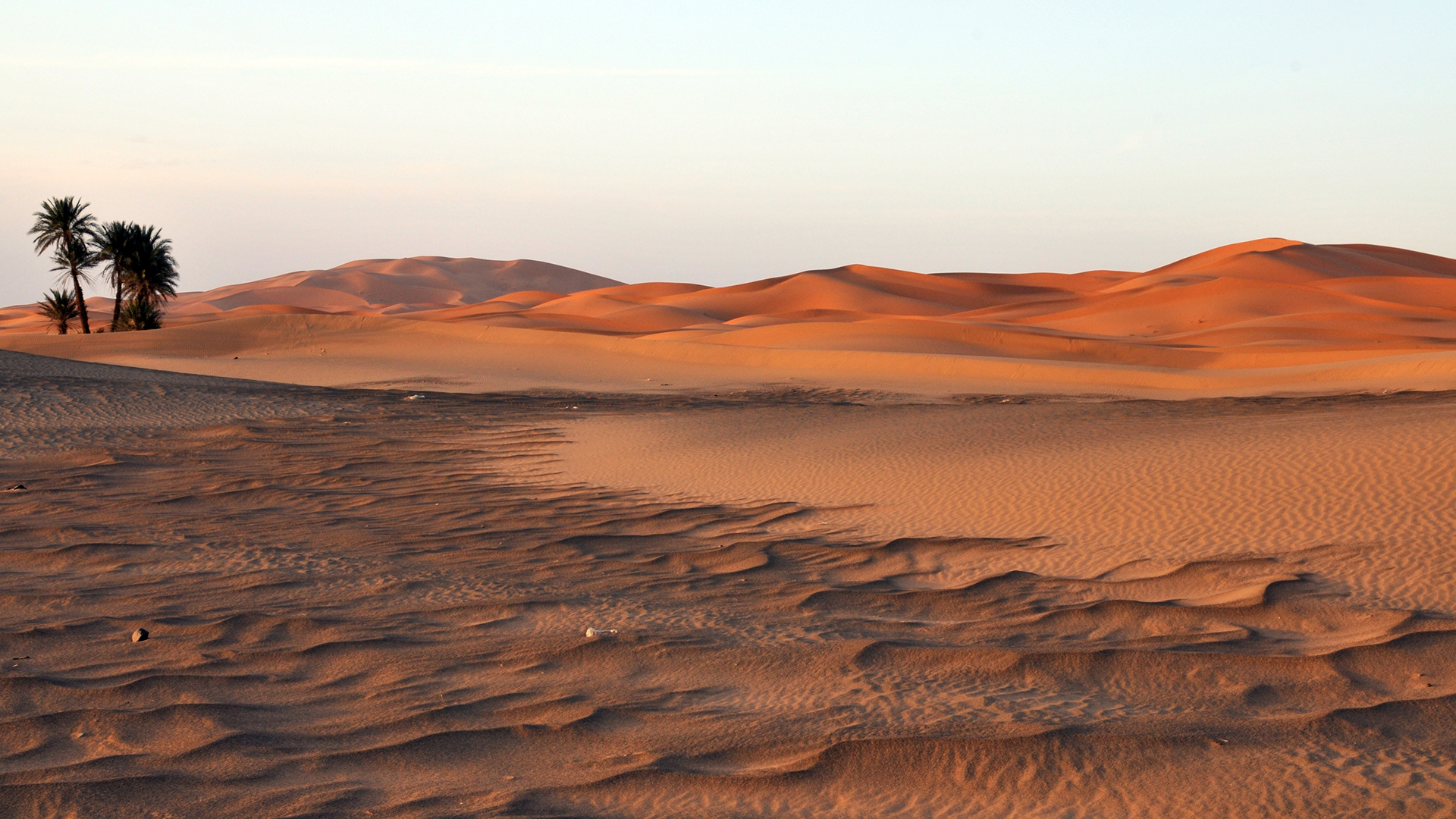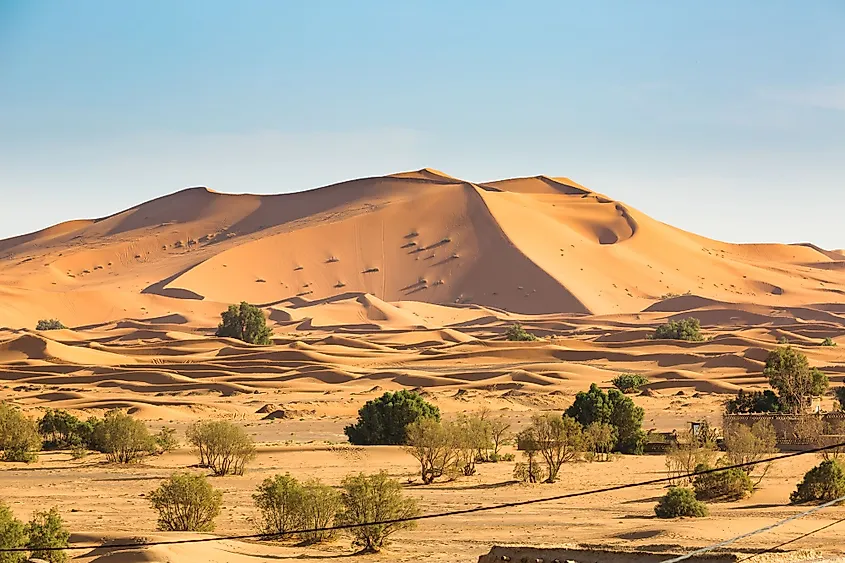Topic the sahara desert in north africa: Discover "The Sahara Desert in North Africa," a land of unparalleled wonder, where timeless beauty meets a rich tapestry of cultures, ecosystems, and histories hidden within the world"s largest hot desert.
Table of Content
- What is the size of the Sahara desert in North Africa?
- Geographical Extent and Location
- Historical Climate Shifts and Environmental Changes
- Diverse Ecosystems and Ecology
- Cultural and Historical Significance
- Current Climatic Conditions and Weather Patterns
- Economic and Natural Resources
- YOUTUBE: Faces of Africa: The Sahara
- Challenges and Conservation Efforts
- Impact on Global Weather and Environmental Phenomena
- Future of the Sahara: Predictions and Research
What is the size of the Sahara desert in North Africa?
The size of the Sahara desert in North Africa is approximately 9,200,000 square kilometers (3,600,000 square miles). It is the largest hot desert in the world.
READ MORE:
Geographical Extent and Location
The Sahara Desert, an emblem of natural grandeur, stretches across North Africa, embodying the essence of vastness and diversity. As the world"s largest hot desert, it covers approximately 9,200,000 square kilometers, a testament to its immense scale.
- Spanning across multiple countries, including Algeria, Chad, Egypt, Libya, Mali, Mauritania, Morocco, Niger, Sudan, and Tunisia, the Sahara is a mosaic of landscapes and cultures.
- The desert"s boundaries are as varied as its terrain, extending from the Red Sea in the east to the Atlantic Ocean in the west, and from the Mediterranean Sea in the north to the Sahel region in the south.
- Characterized by iconic sand dunes, rocky plateaus, sparse vegetation, and occasional oases, the Sahara"s topography is a canvas of contrasts.
- The desert"s coordinates, around 23°N 13°E, place it at a geographical crossroads, influencing weather patterns and ecosystems both locally and globally.
The Sahara"s geographical extent is not just a story of land and climate, but also of the communities, wildlife, and ancient civilizations that have adapted to this majestic yet challenging environment.

Historical Climate Shifts and Environmental Changes
The Sahara Desert, a marvel of geological and climatic transformation, has experienced significant environmental shifts over millions of years. This vast expanse, now known as the world"s largest hot desert, was not always arid.
- Arising about 7 million years ago, the Sahara"s creation was influenced by tectonic movements that formed the Mediterranean Sea and the Alps, leading to a drying of North Africa.
- Climate models suggest periodic green phases in the Sahara, known as the North African Humid Periods, occurring every 21,000 years. These were driven by Earth’s orbital precession, which increased solar energy during summer and intensified the West African Monsoon.
- The presence of large glacial ice sheets during ice ages influenced the Sahara"s climate, suppressing monsoon expansion and contributing to its arid nature.
- Studies of sediment cores from the ocean floor near West Africa reveal a pattern of the Sahara alternating between wet and dry climates every 20,000 years, corresponding with the Earth"s monsoon activity and axial tilt.
- These climatic fluctuations have had profound impacts on the region"s ecosystems and human evolution, serving as a gateway for species dispersal between North and Sub-Saharan Africa.
Understanding the Sahara"s past climate patterns provides valuable insights into its role in shaping human history and ecological diversity, highlighting its significance beyond just a vast desert.
Diverse Ecosystems and Ecology
The Sahara Desert, often perceived as a vast barren land, is in reality a complex and diverse ecological region with unique ecosystems and a surprising variety of life.
- The desert is home to several distinct ecoregions, each with its own characteristic environment and species. These include the Atlantic Coastal Desert, North Saharan steppe and woodlands, and the central Sahara among others.
- Despite its harsh climate, the Sahara supports an array of flora and fauna. Plants like acacia trees, succulents, and Saharan cypress have adapted to conserve water and withstand extreme conditions.
- The animal kingdom is represented by species such as the fennec fox, Saharan cheetah, various reptiles like the horned viper, and a diverse range of bird species.
- Periodic oases in the desert not only support human life but also form crucial habitats for wildlife, providing a sanctuary amidst the arid landscape.
- The desert"s ecology plays a crucial role in the carbon cycle and influences weather patterns far beyond its borders, demonstrating its global environmental significance.
The Sahara"s ecosystems, though often under environmental stress, exhibit remarkable resilience and adaptability, highlighting the desert"s ecological importance and the need for its conservation.

Cultural and Historical Significance
The Sahara Desert is not just a geographical marvel; it"s a rich tapestry of human history and culture. This vast desert has been a cradle for various civilizations and nomadic tribes, each leaving an indelible mark on its sands.
- Historical records and archaeological findings reveal the Sahara"s transformation from a fertile region supporting hunter-gatherers to its current arid state, influencing human settlement and migration patterns.
- The desert has been home to various indigenous groups, including the Berbers, Tuareg, and Bedouins, known for their resilient lifestyle adapted to the harsh desert environment.
- Prehistoric rock art, petroglyphs, and archaeological sites throughout the Sahara provide insights into the lives of its ancient inhabitants, showcasing their artistic expressions and cultural practices.
- The introduction of domesticated livestock around 7,000 years ago marked a significant shift in the Sahara"s social structure, leading to the rise of pastoralist societies.
- The Sahara"s location and vastness have made it a crucial trade route, facilitating the exchange of goods and cultural influences between the Mediterranean and sub-Saharan Africa.
- Despite the challenging environment, the Sahara has supported various settlements around oases, demonstrating the adaptability and resilience of human societies.
The Sahara Desert"s cultural and historical significance extends far beyond its physical boundaries, reflecting a legacy of human endurance, cultural diversity, and interaction that continues to fascinate the world.
Current Climatic Conditions and Weather Patterns
The Sahara Desert, known for its extreme climate, exhibits a range of weather patterns that are crucial in defining the life and landscape of this vast region.
- Characterized by a hot desert climate, the Sahara is one of the hottest regions in the world, with daytime temperatures often soaring above 40°C (104°F) and occasionally reaching up to 58°C (136°F).
- Nighttime in the Sahara sees a dramatic drop in temperature, often falling below freezing during winter months, showcasing the desert"s extreme diurnal temperature variations.
- Rainfall in the Sahara is scarce and sporadic, contributing to its arid conditions. Annual precipitation varies greatly, ranging from virtually non-existent in the most arid regions to occasional, unpredictable showers in others.
- The desert experiences high evaporation rates, which, combined with the lack of rainfall, accentuates its dryness.
- The Sahara"s climate also includes phenomena such as sandstorms and siroccos, driven by strong winds that can reshape its landscape and affect regions beyond the desert.
- Despite its harsh climate, the Sahara does experience climatic variability, with certain regions and times of the year seeing slightly milder conditions.
Understanding the current climatic conditions and weather patterns of the Sahara is essential in appreciating its ecological balance, as well as its impact on surrounding regions and the global climate.
/https://tf-cmsv2-smithsonianmag-media.s3.amazonaws.com/filer/f2/94/f294516b-db3d-4f7b-9a60-ca3cd5f3d9b2/fbby1h_1.jpg)
Economic and Natural Resources
The Sahara Desert, while primarily known for its vast arid landscape, is also rich in diverse natural resources that play a significant role in the economies of the surrounding countries.
- The Sahara is a treasure trove of minerals, including phosphate, iron ore, and vast reserves of oil and natural gas, particularly in Algeria, Libya, and Egypt.
- Salt mines, historically crucial for trade and still operational in places like Mali, provide economic sustenance to local communities.
- Renewable energy potential, especially solar energy, is immense due to the high levels of sunlight. Projects harnessing this potential are underway, aiming to provide power locally and potentially for export.
- Agriculture in the Sahara is limited but significant near oases and river valleys, where irrigation allows for cultivation of crops like dates and millet.
- Tourism, centered around the desert"s natural beauty and cultural heritage, contributes to the economy, offering experiences like camel treks and visits to historical sites.
- Challenges such as desertification and water scarcity impact the sustainable management of these resources, making conservation efforts crucial.
The economic landscape of the Sahara, underpinned by its natural resources, is an integral part of the region"s identity, offering opportunities for sustainable development and collaboration among North African nations.
Faces of Africa: The Sahara
\"Embark on a breathtaking journey through the diverse landscapes and rich culture of Africa in this captivating video. From the vast savannahs to the vibrant cities, experience the magic of this extraordinary continent like never before.\"
The Sahara Desert in North Africa: 1 Minute Knowledge
\"Get ready to be transported to the mesmerizing Sahara desert in this awe-inspiring video. Immerse yourself in the hauntingly beautiful dunes, witness the stunning sunsets, and discover the secrets hidden within this mystical and timeless landscape.\"
Challenges and Conservation Efforts
The Sahara Desert faces numerous environmental and socio-economic challenges, which have prompted various conservation efforts to preserve this unique ecosystem.
- Desertification, exacerbated by climate change, poses a significant threat to the Sahara, leading to the loss of biodiversity and impacting the livelihoods of local communities.
- Water scarcity is a major challenge, with the desert"s limited water resources being further strained by increasing demand and climatic changes.
- Overgrazing and unsustainable agricultural practices contribute to soil degradation, reducing the desert"s already limited arable land.
- Conservation efforts in the Sahara include initiatives to combat desertification, such as reforestation projects and sustainable land management practices.
- Protecting the unique wildlife of the Sahara, which includes several endangered species, is another key aspect of conservation work in the region.
- International cooperation and support are crucial in addressing the environmental challenges faced by the Sahara, given its transnational nature and the interconnectedness of its issues.
Addressing the challenges facing the Sahara Desert requires a holistic approach that balances environmental conservation with sustainable development, ensuring the preservation of this irreplaceable natural wonder for future generations.

Impact on Global Weather and Environmental Phenomena
The Sahara Desert significantly influences global weather patterns and environmental phenomena, far beyond its geographical borders.
- The Sahara plays a crucial role in the global climate system, particularly through its impact on the North African monsoon and atmospheric conditions over the Atlantic and Mediterranean regions.
- Periodic fluctuations in the Sahara"s climate, influenced by changes in Earth"s orbital axis, have historically alternated the desert between arid and more humid conditions, affecting regional and global weather patterns.
- The desert is a key source of mineral dust, which is carried by winds across vast distances. This dust can impact weather systems, marine ecosystems, and even air quality in distant continents.
- Saharan dust clouds, transported across the Atlantic, are known to influence hurricane formation in the Atlantic Ocean and bring essential nutrients to the Amazon rainforest.
- The extensive clear skies and high solar radiation over the Sahara significantly contribute to the Earth"s heat balance, affecting global temperature and climate systems.
The vast Sahara Desert is not just an isolated climatic zone; its unique characteristics make it an integral part of the Earth"s environmental dynamics, with far-reaching impacts on global weather and climate.
READ MORE:
Future of the Sahara: Predictions and Research
The future of the Sahara Desert is a subject of ongoing research and speculation, with various studies predicting different outcomes based on climate change and human activities.
- Climate models suggest that the Sahara may experience varied changes in temperature and precipitation patterns due to global warming, potentially altering its landscape and ecosystems.
- Research indicates that parts of the Sahara could become greener if rainfall increases, a phenomenon that has historical precedents during past humid periods driven by Earth’s orbital changes.
- Conversely, there are concerns that rising temperatures and human activities may lead to further desertification, impacting the surrounding regions and contributing to global environmental challenges.
- Scientific studies are also exploring the potential impact of renewable energy projects, like solar farms, on the desert"s environment and climate.
- There is a growing emphasis on understanding the Sahara’s role in carbon sequestration and its biodiversity, with implications for conservation efforts and climate change mitigation strategies.
- Researchers continue to investigate the complex interactions between the Sahara’s climate, ecosystems, and human activities to predict its future and develop sustainable management practices.
The Sahara"s future remains uncertain, but ongoing research and advancements in climate science are key to understanding and preparing for the changes this vast desert may undergo in the coming decades.
Embark on a journey of discovery through the Sahara, a land where ancient sands whisper tales of resilience and mystery, promising a deeper understanding of our planet"s past, present, and future.



